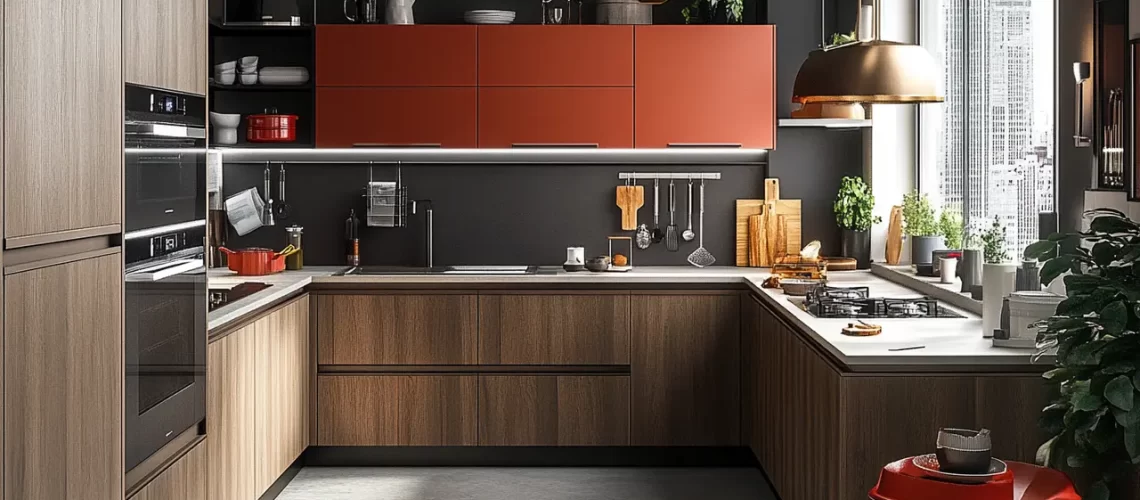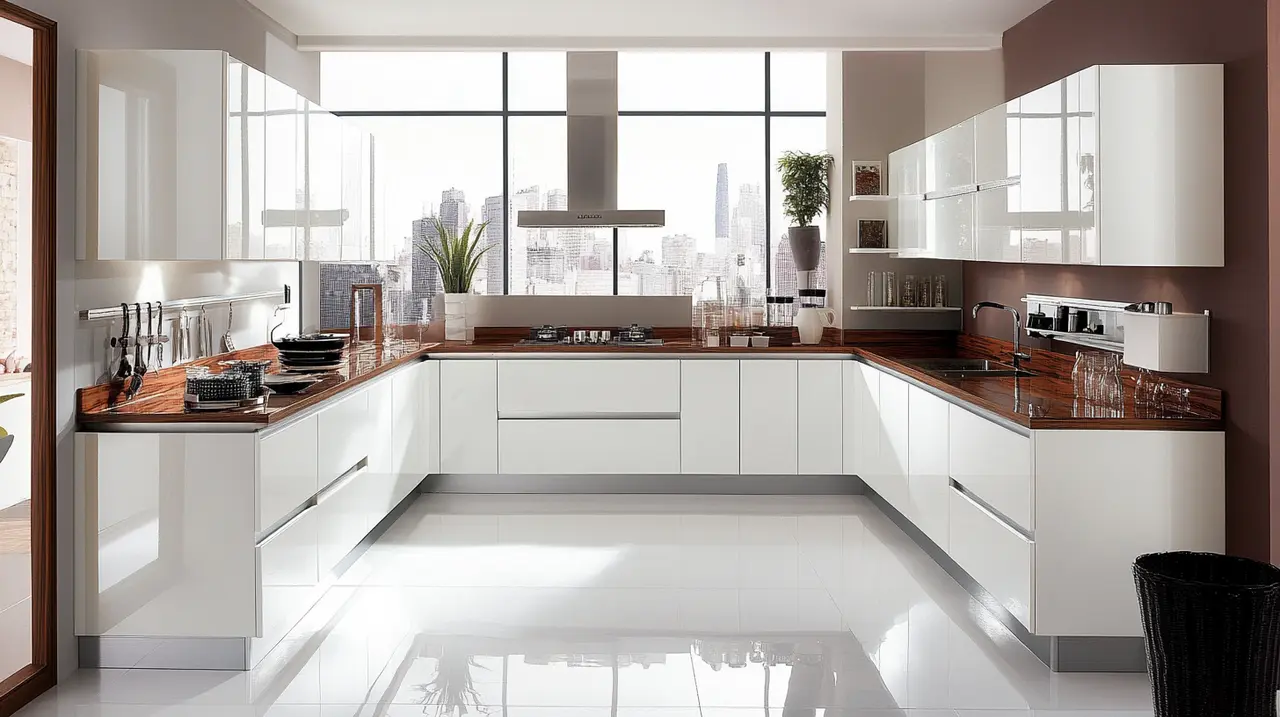Living in a small home doesn’t mean sacrificing comfort or style. With the right approach, you can make the most of every inch, creating a space that is both functional and inviting. In this blog, we’ll explore some simple yet effective tips for making the best use of your limited space.
1. Embrace Multifunctional Furniture
In small homes, every piece of furniture must earn its keep. Multifunctional furniture pieces are heroes in small spaces, serving dual purposes and reducing clutter. Consider a coffee table that also serves as a storage chest or a desk that folds out from the wall when needed. These pieces are not only space-savers but also allow for greater flexibility within the home. A modular sofa can function as a couch, bed, and even storage space. Such versatile furniture helps maximize limited space by providing multiple functions, allowing you to keep rooms tidy and efficient.
Another clever strategy is choosing a dining table that can expand or collapse depending on the number of diners. If you have a kitchen island, it can serve both as a cooking space and a casual dining area, enhancing the overall functionality of your home. Maximize natural light in these areas to brighten up multifunctional spaces and create a more inviting environment.
2. Maximize Vertical Spaces
When floor space is limited, turn your attention upwards. Utilizing vertical space not only frees up room but also adds to the visual appeal of your home. Install tall shelving units that reach the ceiling to store less frequently used items at the top and essentials within easy reach. Stylish hooks or pegboards can also be used on walls to hang pots, pans, or even bikes, keeping the floor clear and the area organized.
Consider installing loft beds in bedrooms to free up floor space for a study desk or additional seating. This is particularly useful in children’s rooms, where play areas are essential. High-mounted cabinets in the kitchen and bathroom provide storage while maintaining a clean and uncluttered look. Integrating these vertical solutions creates a more functional and aesthetically pleasing environment, allowing every inch of your home to be utilized efficiently. The use of mirrors at heights can further help reflect light and make the ceiling seem higher.
3. Opt for Sliding Doors
Traditional swing doors require a significant amount of clearance space, often cutting into valuable square footage. Sliding doors, on the other hand, glide along the wall and open up new possibilities for room layout. Consider using barn doors, pocket doors, or bi-fold doors to conserve space while adding a touch of style and modernity.
In smaller homes or apartments, using sliding doors not only saves space but also allows for more flexible furniture arrangements. This is particularly beneficial in small bathrooms, closets, and between living areas where every bit of space counts. Additionally, using sliding glass doors instead of solid ones can help maintain a sense of openness and light throughout your home, making spaces feel larger and more interconnected.
4. Utilize Hidden Storage Solutions
Hidden storage solutions can transform a room from cluttered to streamlined in no time. Think cleverly designed furniture with concealed compartments, such as beds with drawers underneath or coffee tables with lift tops revealing hidden storage beneath. These solutions are vital for maintaining an organized space, especially when square footage is limited.
Try building storage into unexpected places like the stair risers—each step can be a pull-out drawer. Kitchen benches can have storage compartments underneath, and hollow ottomans can store away throws and pillows. The trick is to design or select furniture that has storage as a core feature. By creatively integrating these elements into your home, you ensure that everything has a place, reducing visible clutter and maintaining a serene living environment.
Even your daily-used spaces, like the living room, can benefit from hidden storage. Consider wall-mounted cabinets or shelves with sliding panels that double as artwork or mirrors, seamlessly blending utility with aesthetics. Mirrors not only provide the illusion of a larger area but can also be designed to hide or reveal shelving and cabinets.
5. Select Light Colors for Walls
The color palette of your walls plays a critical role in defining the perceived size of your space. Lighter shades, such as whites, beiges, or soft pastels, reflect more light compared to darker colors, making rooms appear larger and more open. Paint your ceiling with a lighter shade than your walls to create an illusion of height and volume.
For those who love incorporating color, consider keeping the primary colors neutral while adding splashes of bold colors in decor and accessories. This approach maintains the spacious feel of the room while allowing personal expression. By strategically using light hues, especially in small bedrooms, you enhance natural light dispersion, making the space feel airy and inviting.
6. Incorporate Mirrors Effectively
Mirrors are the secret weapon in creating a sense of space in small rooms. By strategically placing mirrors opposite windows or sources of natural light, you can double the amount of sunlight bouncing through the room. This not only brightens the room but also creates a visual continuity that enhances the perceived space.
Large statement mirrors or mirrored walls can make a room appear more expansive, providing depth and dimension. For a more cohesive look, try mirrored furniture like nightstands or coffee tables to add sophistication and functionality without overwhelming the space. Mirroring wardrobe doors is an excellent option, serving dual purposes while optimizing bedroom space.
7. Choose the Right Window Treatments
Window treatments can significantly affect the perception of space. Opt for sleek, minimal designs like roller blinds or sheer curtains to allow maximum light penetration. Heavy drapes, while cozy, can shrink a room if they’re too dark or voluminous.
Installing curtain rods high above the windows and using floor-length treatments can accentuate the room’s height. Choose colors that match the walls for a seamless look that doesn’t interrupt the visual plane. This technique draws the eyes up and creates an illusion of expanded space, enhancing natural light and the openness of your living area.
8. Keep Clutter to a Minimum
A cluttered home can feel cramped and overwhelming. Adopt a minimalist approach to your belongings by regularly sorting through items and keeping only those that are necessary or bring joy. Utilize baskets and bins to keep small items organized and out of sight, maintaining clean surfaces and an open feel.
Consider adopting the ‘one in, one out’ rule, where for every new item brought into the home, an old one is removed. This practice prevents accumulation and encourages mindful living. Organization systems that fit your lifestyle include wall organizers, drawer dividers, and categorized shelving, which can significantly aid in maintaining a tidy, spacious environment.
9. Create Defined Zones
Defining zones within open spaces can enhance functionality and create a sense of order. Even in compact homes, separate areas for lounging, dining, and working can be established using rugs, furniture arrangements, or visual dividers like open bookcases.
Consider the flow of activity in each area and arrange furniture to facilitate ease of movement. Integrating multifunctional zones, such as using a table for both dining and work, can conserve space while serving multiple purposes. This approach allows for flexible use of space that can adapt to your changing needs—promoting efficient space utilization without compromising comfort.
10. Incorporate Natural Light
Natural light can breathe life into any room, making it look bigger and more inviting. Maximize windows by keeping them free of obstructions and use reflective surfaces to bounce light around the room.
Place furniture strategically to avoid blocking windows, ensuring every corner is well-lit. Employ lighter, airy fabrics for window treatments to let sunlight flood your home. On cloudy days, supplement with various layers of artificial lighting, such as floor lamps and sconces, to maintain a well-lit environment conducive to both productivity and relaxation.


